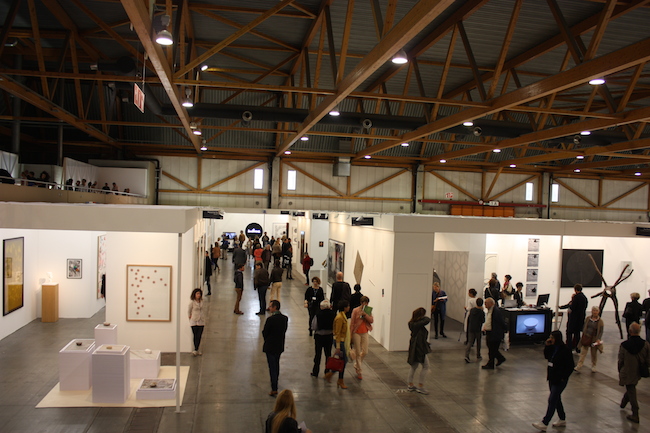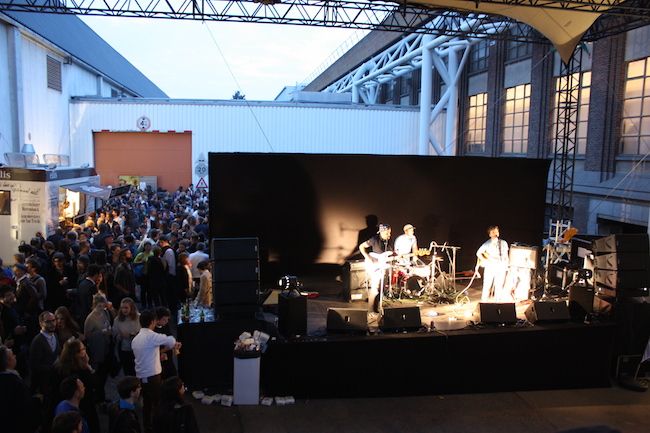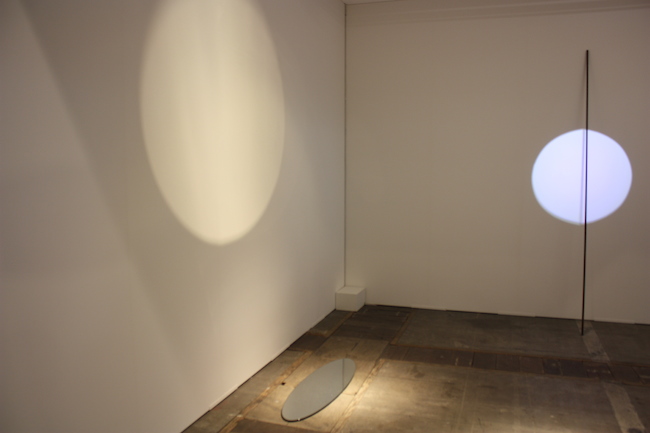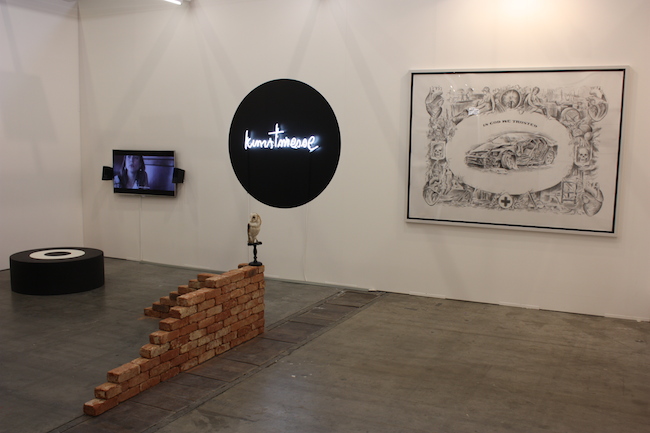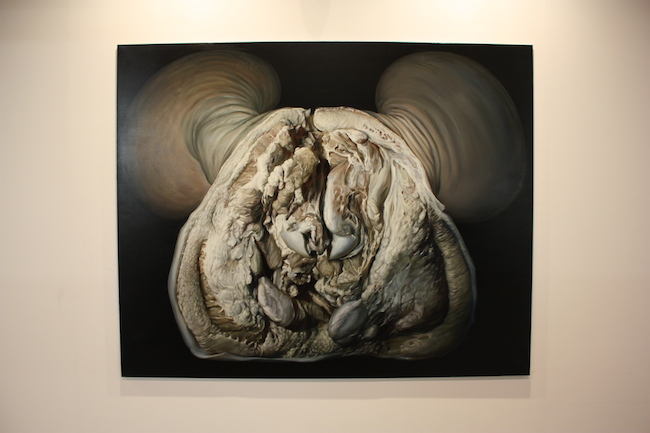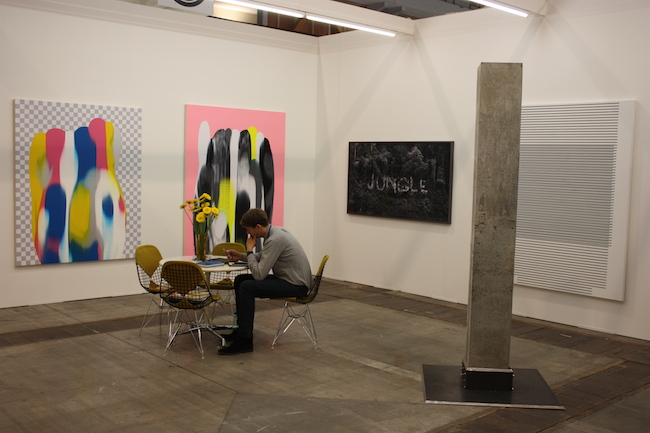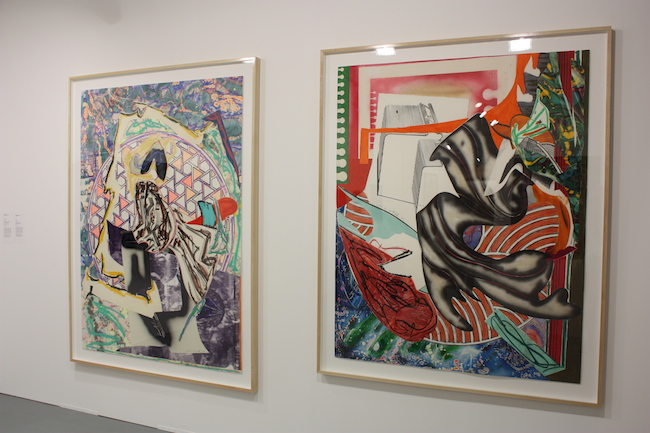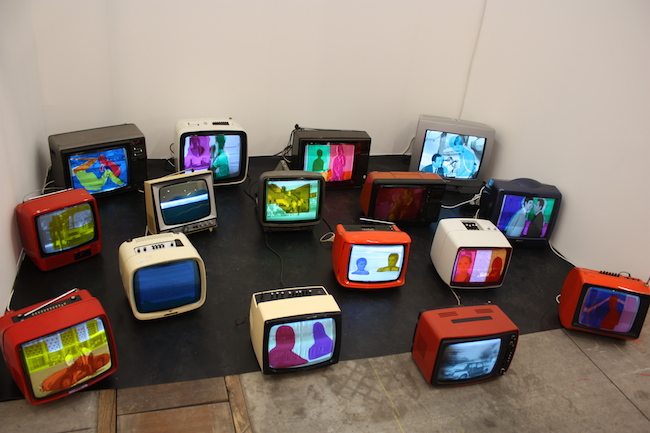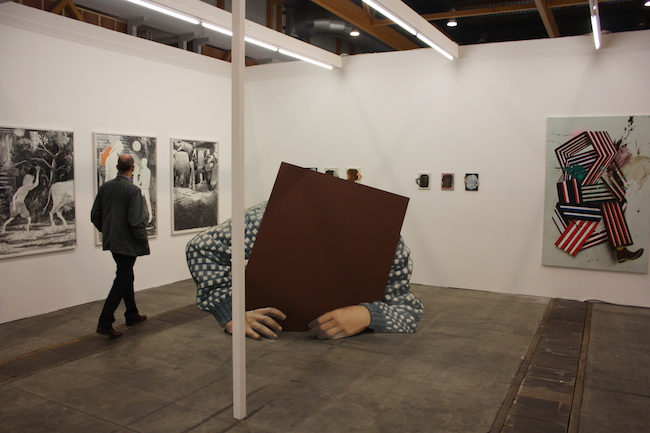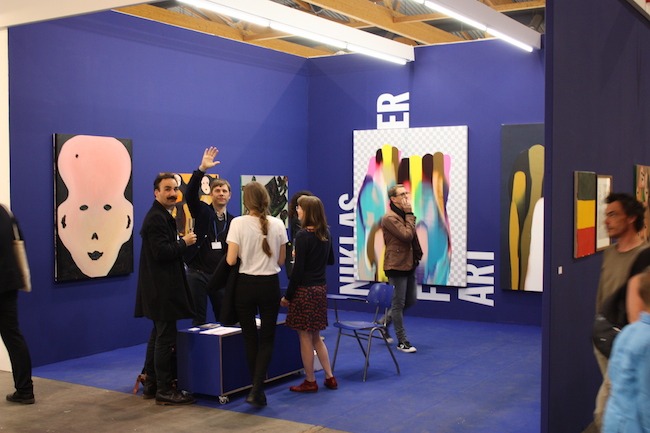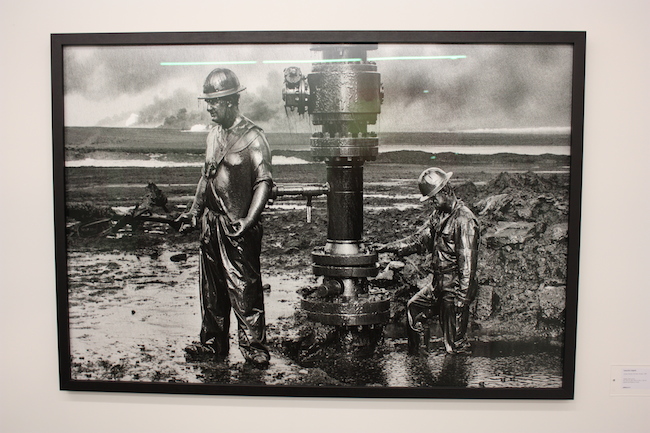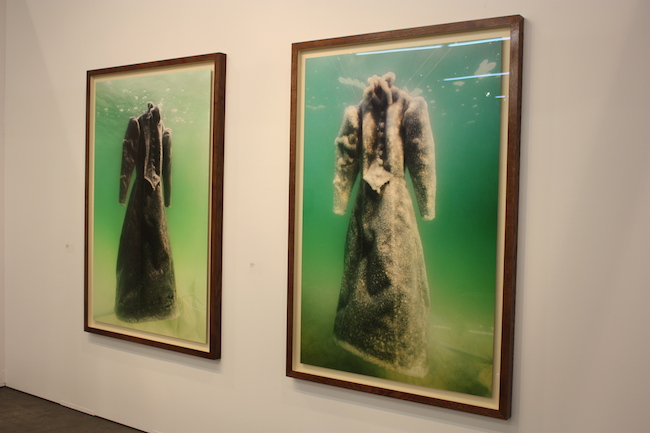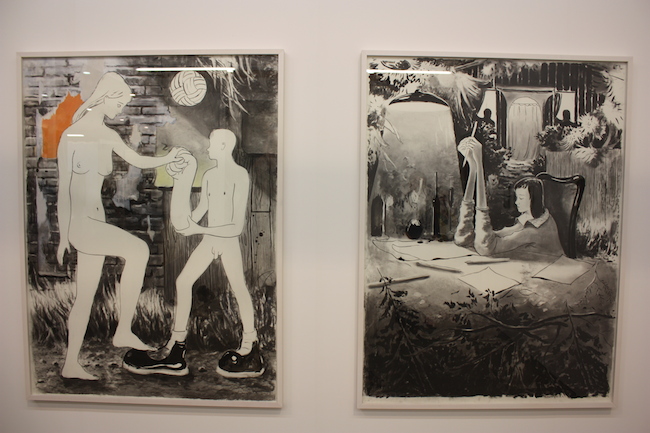
Report from Art Brussels 2015
28/05/2015
As the last day of the 33rd edition of Art Brussels approaches, it has once again cemented its profile as being young and fresh in its approach – a place for discoveries, as well as proof that the traditional concept of the art fair can (and should) be rethought. As the fair’s artistic director Katerina Gregos (who is also a curator of the Belgian Pavilion at the Venice Biennale 2015, opening on May 9) has said on several occasions, Art Brussels is a place to meet the ‘unusual suspects’, i.e. artists at the start of their careers, in contrast to many other large art fairs where you encounter the same well-established galleries and big names year after year. This profile is also supported by the generally relaxed atmosphere and the conspicuously young crowd of fair goers who pour in during the fair, particularly on Vernissage Day, which took place on Friday this year, as well as on the following day. Created to complement and encourage the atmosphere and audience, the set design of the fair is entrusted to young and promising architects. People lounge on the steps of the gigantic staircases in Halls 1 and 3, on the terrace outside the fair (constructed by B-ILD), or outside on the lawn – whenever the spring sun peeps through the clouds. Even the obligatory programme of talks (which, with the aim of adding more depth and thereby proving that it not merely a commercial event, has become a part of every self-respecting art fair) has been replaced this year by a programme of live music performances by contemporary artists and their bands on an outdoor stage. This almost gives you the feeling that you are at a music festival. In the packed stage area, the de rigueur champagne has been replaced by beer and cigarette smoke hangs in the air. Monday, the last day of the fair, was rounded up by a DJ set.
Art Brussels 2015
Artist's Music, The Stage
All this 'youth' notwithstanding, a number of large and established galleries – such as London-based Marlborough Contemporary, and Brussels- and New York-based Gladstone – are also present at Art Brussels. However, one of the new initiatives for the fair this year is the breaking down of the hierarchical division between the young galleries and the established galleries. This has been done through the act of mixing them together – they used to be separated between the two large exhibition halls of the Brussels EXPO. Despite this new 'mixing', many of the major players still seemed to be enjoying the safe company of one another as they gathered side by side in one of the halls. 191 galleries are participating this year, and they have been divided up into sections titled PRIME, YOUNG and DISCOVERY. Almost 60 percent of the artists at the fair are young and emerging.
Wall drawing by Clo'e Floirat at Discovery Bar
One of the goals of the organisers of Art Brussels is to attract galleries that don't sell artworks for huge sums of money; the organisers believe that art fairs shouldn’t be all about the breaking of records and pricey celebrity artists making headlines. Art Brussels generally tries to nurture a critical view; consequently, ironic comments on the art world, and particularly on art fairs, can be seen in several places at the fair. One such remark is the large humorous wall drawing by Clo'e Floirat at the entrance to one of the halls, in which her cartoon characters greet the coffee-thirsty crowd queuing up at the coffee bar.
Art vending-machine by Sadaharu Horio at Axel Vervoordt Gallery, Antwerp, Hong Kong, in the SOLO section
Humour and irony – characteristics that seem to be highly appreciated by Belgians – are also present in many of the works displayed by the galleries. The project by Japanese artist Sadaharu Horio, at Axel Vervoordt (Antwerp), was one such ironic reflection upon the art world. Here, for one euro, visitors had the chance to draw one of ten different kinds of artworks on paper being dispensed from an art vending-machine; it appeared to be highly popular – there was a permanent queue at the installation, which was supervised by two assistants.

Carl Andre at André Simoens, Knokke

Jannis Kounellis, André Simoens, Knokke
Criticism of the concept of art fairs in general has become more and more pronounced in the past few years, thereby forcing many art fairs to reinvent themselves. Art Brussels particularly encourages galleries to show the works of just one artist, and not the usual confusing mix of a few works from several artists; when they are all squeezed into the limited space of a fair booth like that, it doesn't give the visitor the chance to get a deeper insight into the work of the individual artists. Which is why in the sub-section SOLO, curated projects are presented to showcase the work of a single artist. The solo presentations are pre-selected by Katrina Gregos, and the one deemed best is rewarded with the SOLO Prize. This year the jury had such a difficult time selecting just one from all of the participating projects that it chose to jointly award the prize to two separate projects. The winners were Germaine Kruip (represented by G262 Sofie van de Velde, Antwerp), who plays with light, shadows and shape in her minimalistic objects; and Honoré d’O (represented by Kristof De Clercq, Ghent), with his installations made out of ordinary materials and objects. The SOLO presentations showcased some truly excellent projects, making the jury’s headaches altogether understandable.
Winner of the SOLO Prize, Germaine Kruip, G262 Sofie van de Velde, Antwerp

The co-winner of the SOLO Prize, Honoré d’O, Kristof De Clerq, Ghent
Latvia was also represented at the SOLO section this year – Alma Gallery (Riga) showed works by Andris Eglītis, one of the artists representing Latvia (together with Katrīna Neiburga) at the Venice Biennale 2015. Eglītis’ series of photographs, “Possible Place”, seemed to especially attract attention with their poetic and delicate, but at the same time – dark, appeal; one Belgian collector aptly described it as Nordic noir.
Andris Eglītis, Alma Gallery, Riga
Scandinavian galleries were in the minority at Art Brussels 2015. The Norwegian galleries Galleri Brandstrup and OSL Contemporary were the only representatives from Scandinavia. Eastern European galleries were also practically absent, the exceptions being: the aforementioned Alma from Riga; the Warsaw-based galleries LETO, Profile, and Žak | Branicka (which has relocated from Poland to Berlin); and Ani Molnár Gallery and TRAPÉZ, from Hungary.
On the other hand, there was a strong focus on American contemporary art at Art Brussels, with a large number of American galleries being represented particularly in the YOUNG section. This fact can partly be explained by Belgian collectors’ interest in American art, but no doubt, also because of the hipness factor long associated with American galleries.
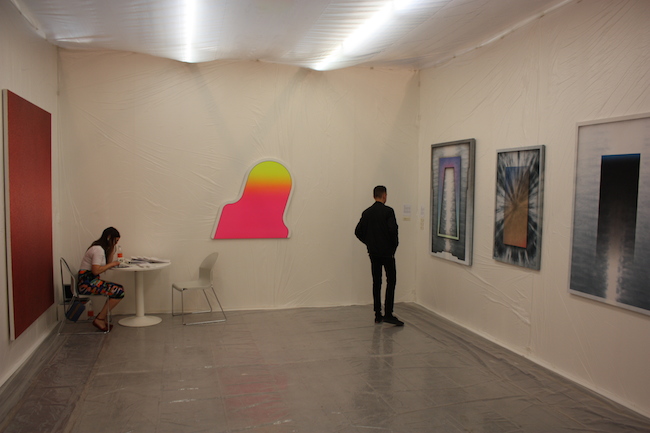
The Hole, New York
During the press conference on Friday, in which the winners of the SOLO Prize and the YOUNG Prize were announced, a metaphorical bomb was dropped with the news that in 2016, Art Brussels will be moving to the Tour & Taxes site in the city's centre. Located in the northern part of Brussels, the Tour & Taxes site consists of warehouses and office buildings from around the beginning of the 19th century, all of which surround a former train station. The announcement caused quite a stir among those present. With this move, Art Brussels will join the growing band of art fairs to swap remotely-located and dull fair venues for more attractive and accessible locations closer to the city centre.
However, this change of location also means that the number of participating galleries will be considerably fewer. It is going to be exciting to see how the changes are going to affect the profile and future of Art Brussels.

Managing Director of Art Brussels, Anne Vierstraete, and Artistic Director Katerina Gregos, announce the winners of the SOLO Prize and the YOUNG Prize
Aeroplastics, Brussels
Alberta Pane, Paris
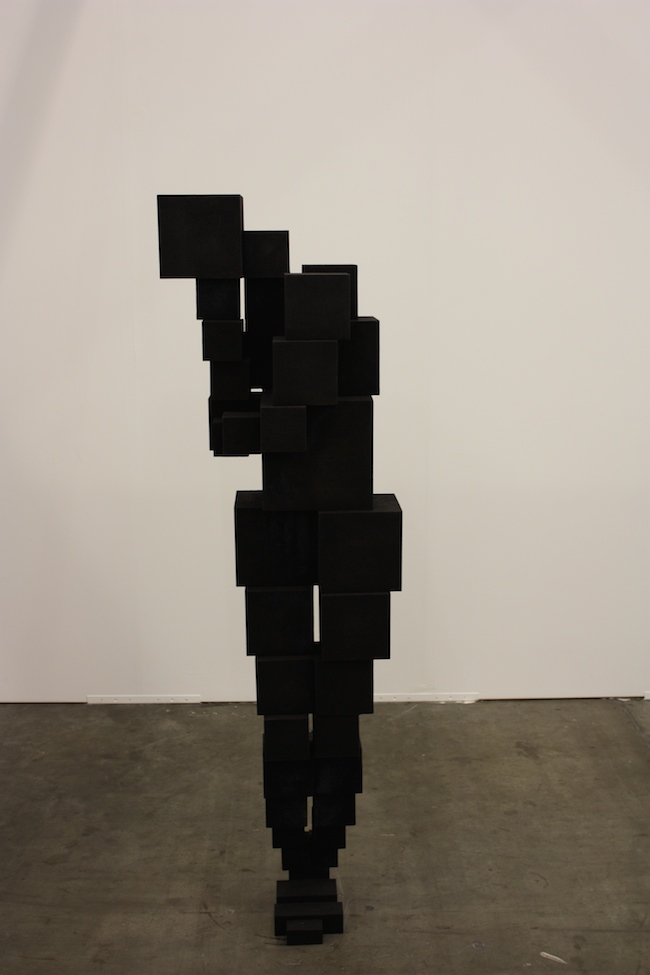
Antony Gormlay, Xavier Hufkens, Brussels
Brian Kokoska, Johannes Vogt, New York
Cindy Wright, Van De Weghe, Antwerp
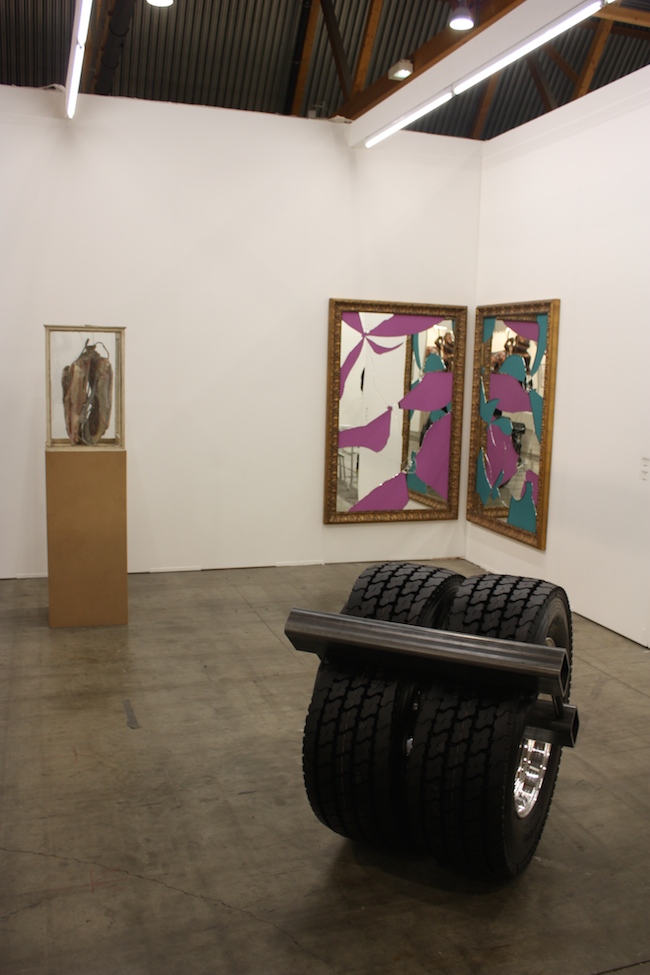
Continua, Beijing, Paris, San Gimignano
DITTRICH&SCHLECHTRIEM, Berlin
Frank Stella,Waddington Custot, London
Hiva-K,prometeogallery di Ida Pisani, Milano
Joseph Tang gallery in DISCOVERY section
Kleindienst, Leipzig
Niklas Schechinger, Hamburg
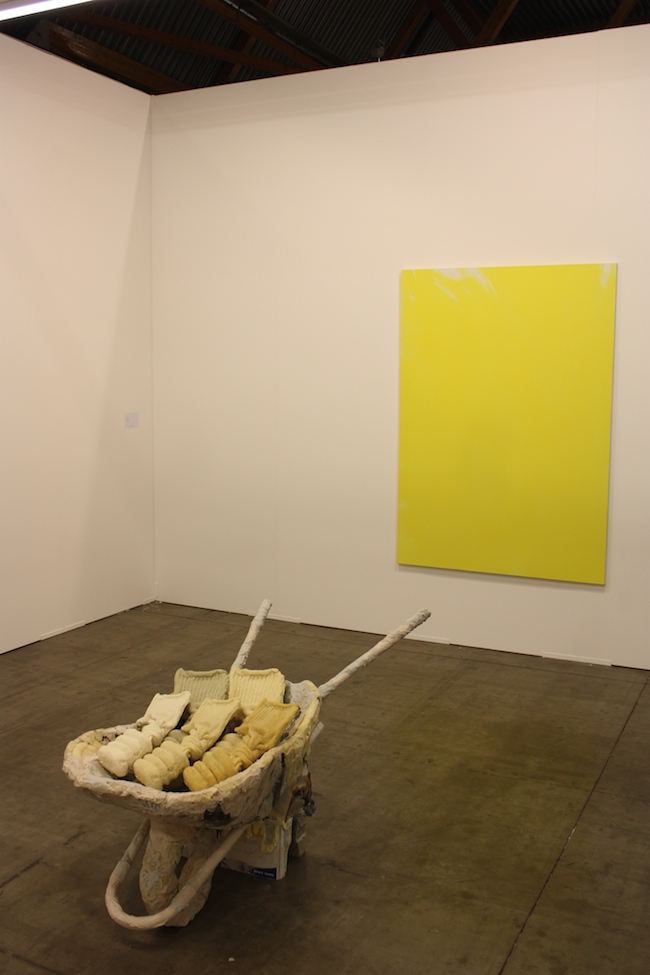
Office Baroque, Brussels
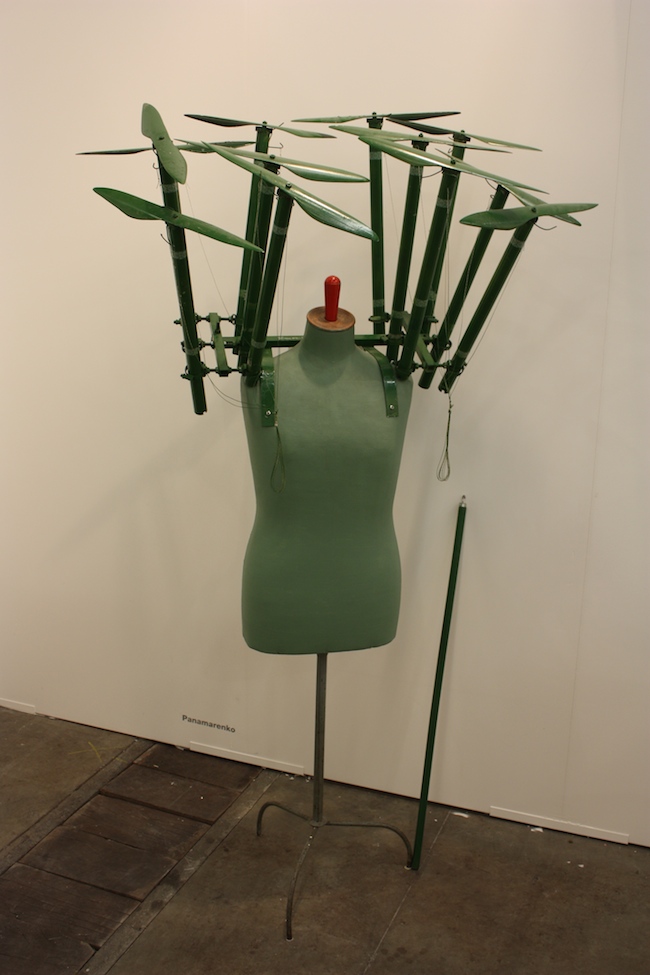
Panamarenko,mulier mulier, Knokke

Pavla Sceranková, Drdova, Prague
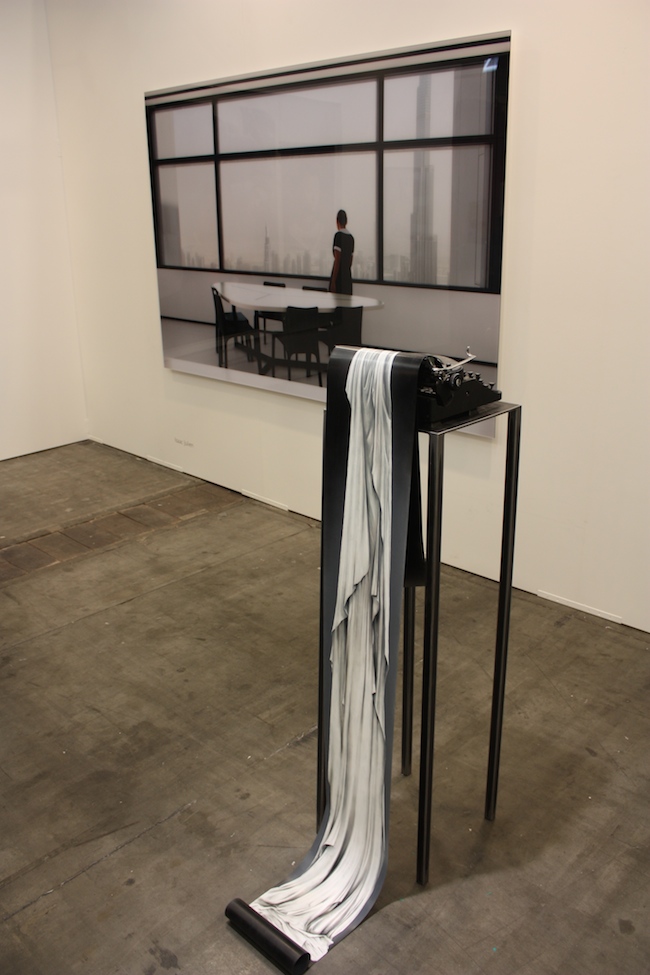
Ron Mandos, Amsterdam
Sebastiao Saldago,Polka, Paris
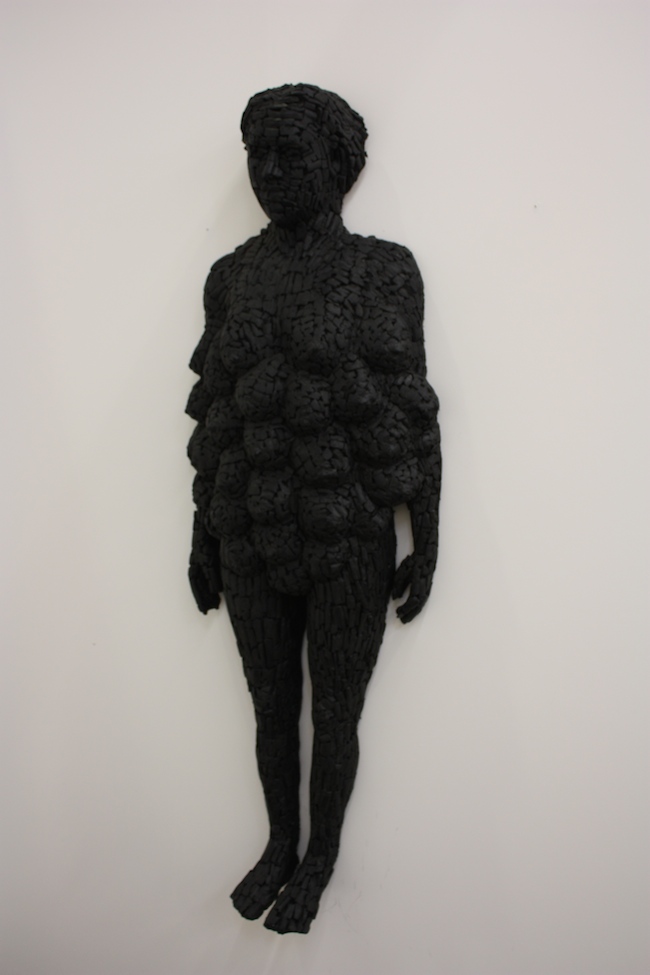
Shanthamani M, Suzanne Tarasieve, Paris
Sigalit Landau, Marlborough Contemporary, London
Thilo Baumgarten, Kleindienst, Leipzig

Thorsten Brinkman, Hopstreet, Brussels

Waterside contemporary, London
